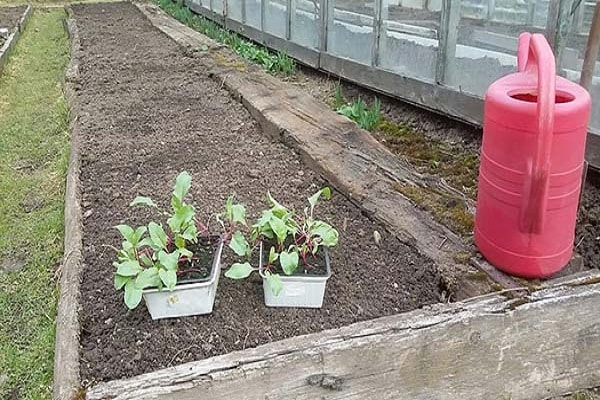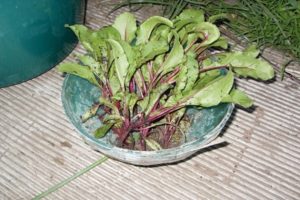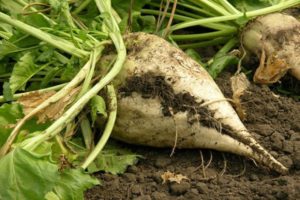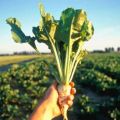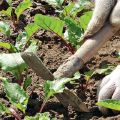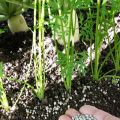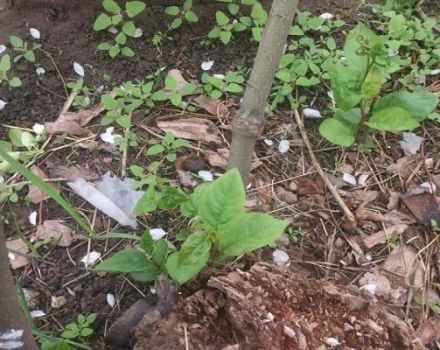Why beet leaves turn yellow and curl and what to do
Beets are considered the most unpretentious crop, but like any other vegetable, they are prone to various diseases. A healthy plant has juicy, green leaves with burgundy veins.
You can judge by the tops whether the plant is doing well or not. Therefore, it is important to be able to identify diseases and know why the leaves of beets turn yellow.
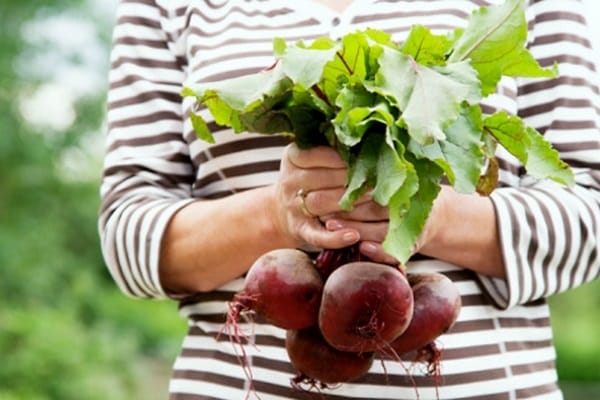
Beneficial features
The root vegetable contains a large amount of essential nutrients for humans. Beets are rich in vitamins C, PP, B1, B2, B3, B5, B6, B9, A and E. In addition, the vegetable includes a number of minerals such as potassium, iron, magnesium, calcium, chlorine, phosphorus, sodium and others.
The product has an antioxidant effect on the human body. Regular consumption of beets helps to strengthen the capillaries, increases the level of hemoglobin in the blood and heals the body.

Gardeners grow crops annually and diligently take care of it. But it happens that the beet leaf dries, changes color or becomes stained - this is a signal that something is wrong with the plant.
Causes of yellowing leaves
The state of the tops is an indicator of the healthy development of the vegetable, therefore, if the leaves of the beets turn yellow, this means that the condition of the plant is deteriorating. This symptom may indicate several factors: the culture does not receive enough moisture or lack of nutrients (most often it is a lack of nitrogen, iron, magnesium).
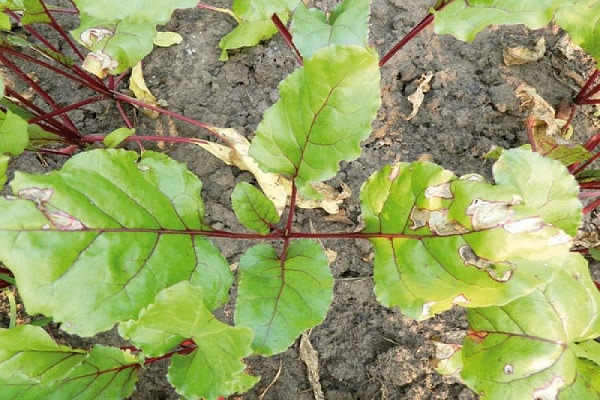
The tops turn yellow if the crop is affected by a viral disease or if the root system is sick. A change in the color of the tops also occurs as a result of exposure to pests.
Lack of moisture in the soil
The most common cause of yellow foliage is insufficient watering. If the beets do not receive enough moisture, light and oxygen, then their tops grow small, weak and yellow.
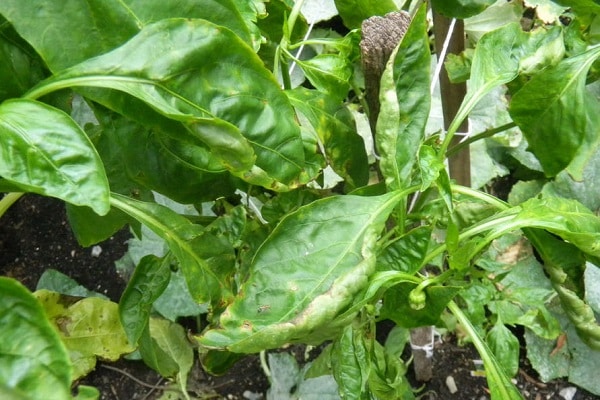
The vegetable loves water, so regular and correct watering is important, especially during the period of root crop formation. In hot weather, it is recommended to irrigate seedlings 3-4 times a week, using 3-4 liters of water per 1 m². For adult root crops, the volume of liquid is increased to 10 liters per 1 m², but the watering itself is carried out less often - 1-2 times a week. Irrigation is stopped about a month before harvest.
Pests
If the beet tops have already turned yellow or turn yellow, loses their elasticity, curls, dries up, then pests may be the cause. The culture is affected by such insects as the scutellus, fly larvae and adult insects, crumb, common flea and aphids.
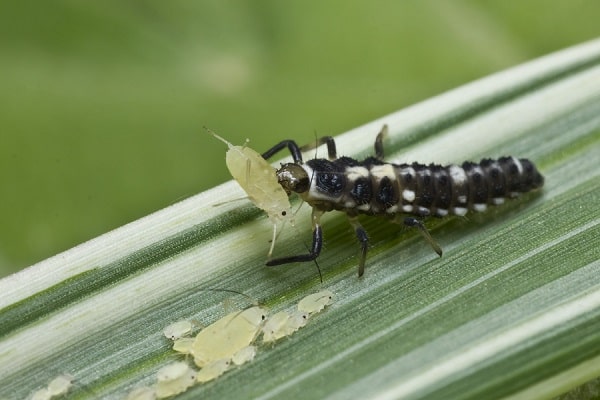
Quite often, the vegetable is overcome by the beet aphid, which can appear at the end of May and change 10 generations over the summer.Pests suck the juices from the leaves, from which the latter curl and change color. Aphids greatly spoil the crop, so it is necessary to immediately fight with it in various ways.
It is recommended to attract natural enemies of aphids to the garden, which are beetles, larvae of ladybugs and hoverflies. These insects live in the beds where the testes of onions, cabbage, and carrots are sown.
To combat aphids and other pests, insecticides and various folk methods are used. For example, you can treat the beds with infusion of green dandelion leaves in water. Knowing about beet pests, it is easy to prevent the problem by taking preventive measures.
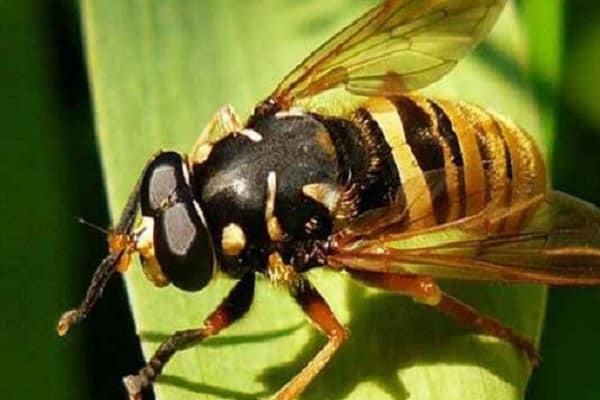
Diseases
When the leaves turn yellowish or yellow with a green tint, the plant may be overcoming a disease. There are several pathologies with this symptom:
- Brown rot. The infection affects the root vegetable. The development of the disease is accompanied by symptoms such as underdevelopment of leaves, a change in their color and dying off, a lag in the development of the root system and, at the very end, decay of the root crop. The disease can also manifest itself during the winter storage of the product. When the first symptoms of infection are detected, the plant must be treated with boron.
- Downy mildew. Fungal infection, which is often transmitted through soil (if contaminated with plant debris), wind and water. When an infection occurs, the affected leaves are deformed, a purple-gray bloom appears on them, the tops begin to fade and change color. In order to avoid contamination, it is necessary to thoroughly clean the land after harvesting, to decontaminate the seeds. During the period of growth and development, beets are treated with a mixture of wood ash and water, as well as a solution of water and whey.
- Black leg of beet. Another name is korneed. With the development of the disease, beet leaves turn yellow, lose their elasticity, wither. Most often, the disease occurs with a large amount of moisture or on acidic soil. To prevent contamination of the crop, acidic soils are fertilized with lime, and the soil is regularly loosened.
- Cercosporosis. Fungal disease manifests itself in the form of spots on the tops. The spots have a light color and a brown border; during the development of mycosis, the leaves turn black and wither. To prevent infestation, the seeds are heat treated. If the disease has arisen on an already growing specimen, then the tops are treated with chalk and fertilized with a 0.5% boron solution.

Lack of nitrogen
Another reason for yellow foliage is a lack of nitrogen. Beets need a number of substances in the soil to grow, most often nitrogen and potassium. With a lack of nitrogen, the tops become yellowed. The color change of foliage begins with the veins and tissues around them. Over time, the tops partially die off, the plant slows down growth.
The use of fertilizers, beets together with water, it absorbs the necessary substances, and its condition gradually improves.
Gardeners recommend fertilizing the crop with nitrogen-containing preparations. The best time for such manipulations is June. During this period, there is an intensive growth of tops and roots. The plant begins to feed. As a result, the root crop becomes dense, and the leaves become juicy and elastic.
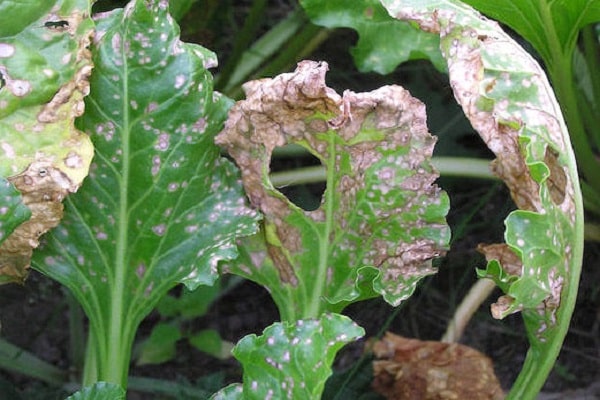
What to do if the leaves turn yellow
If the leaves turn yellow, it is necessary to determine the cause of the symptom as early as possible. You may need feeding and watering, water the beets regularly, since this plant is water-loving.
The use of natural nitrogen-containing fertilizers in the garden will be useful. These include mullein and bird droppings.
A special solution is prepared from raw materials. Poultry droppings are diluted in water 1:15, and the mullein solution contains 1:10 raw materials and liquid. So that the beets do not lose nutritious juices, and their leaves do not turn yellow, preventive measures must be constantly taken.

Preventive measures
Disease control of crops and measures against insect pests are essential in plant cultivation. Preventive measures include:
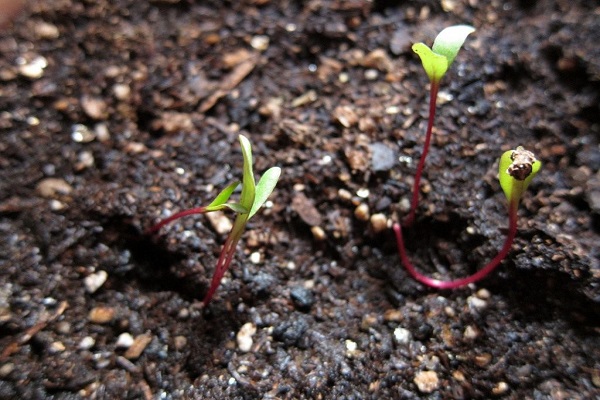
- regular watering;
- weeding the beds;
- correct crop rotation;
- digging up soil for the winter and removing plant residues;
- timely fertilization;
- the use of insecticides and folk remedies for pest control.
When the recommendations of gardeners are followed, the beet tops will have a healthy look, and the roots will gain the necessary nutrients. As a result, you can get a rich harvest of healthy and tasty vegetables.
